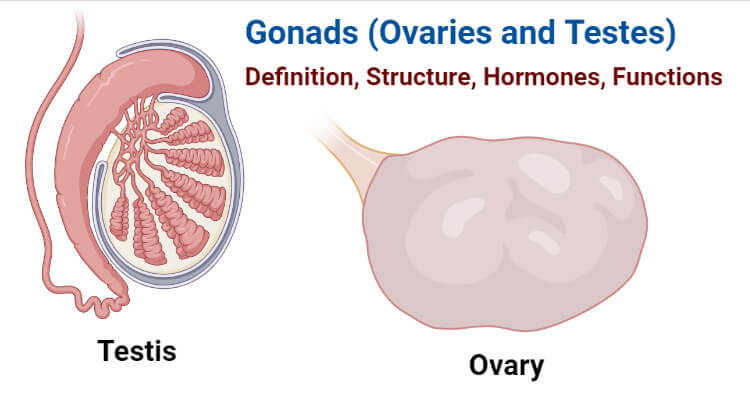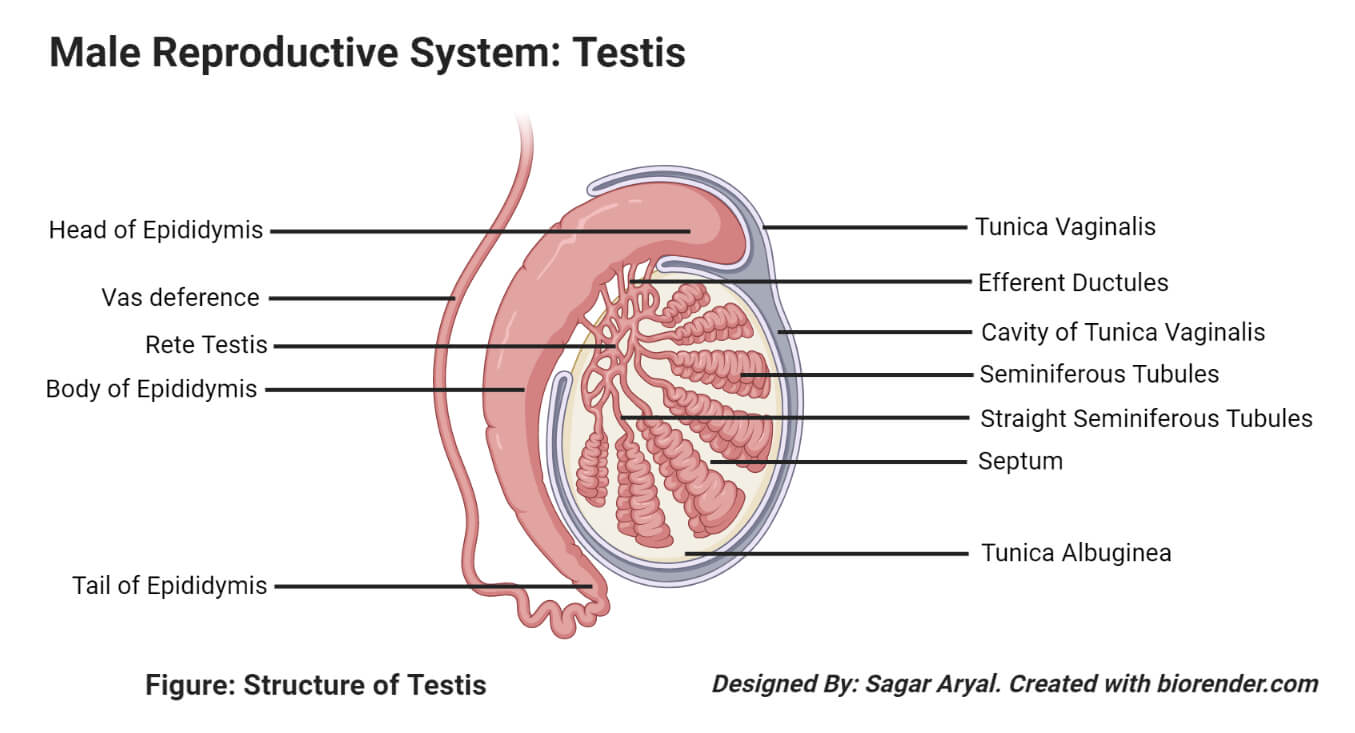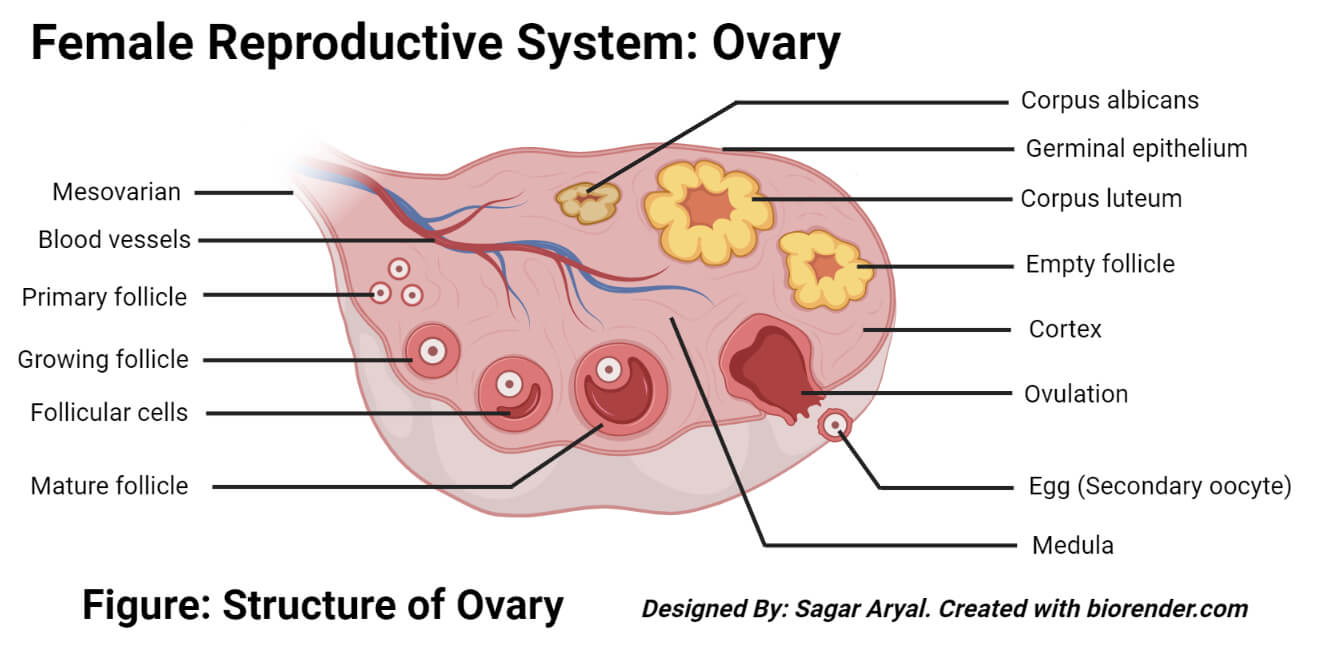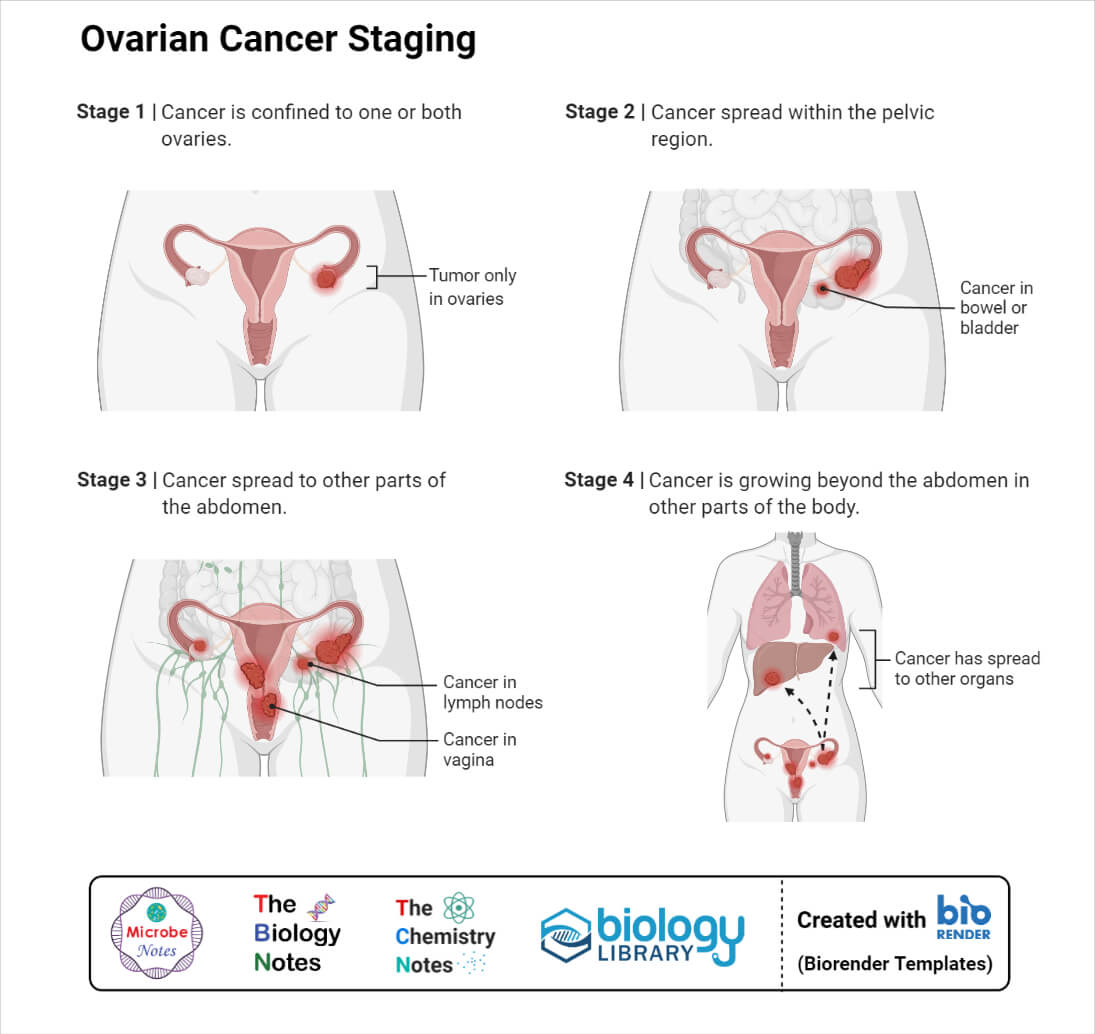What are Gonads?
Gonads Definition
The male and female gonads are endocrine glands that produce sex hormones essential for the development of reproductive organs and the proper functioning of the process of reproduction.
- Gonads secrete the same set of hormones secreted by the adrenal cortex in the form of androgens. The release of hormones by the gonads is regulated by the release of gonadotrophin stimulating hormone of the pituitary gland.
- The male gonads are called testes, whereas the female gonads are called ovaries. The sex hormones secreted by the male and female gonads are different but perform more or less similar functions.
- There is a pair of testis in men that secrete the hormone testosterone as the primary sex hormone. The hormone is responsible for the development of the male sex organs as well as the development of secondary sex characteristics in men.
- The gonads occur in the form of ovaries in women. There are two ovaries in women that secrete two hormones, estrogen, and progesterone that are responsible for different processes like ovulation, menstrual cycle, and development of secondary sex characters in women.
- The synthesis and release of sex hormones by the gonads are regulated by two hormones secreted by the pituitary; luteinizing hormone and follicle-stimulating hormone.
- These hormones also work as sex hormones by helping in the formation of male and female gametes.

Structure of Testes
- Human testes are composed of 900 seminiferous tubules that contain cells that later differentiate and mature into male gametes.
- There are two testes in humans, each of which is plum-sized, measuring approximately 4 cm in length.
- The seminiferous tubules of the testes are surrounded by interstitial endocrine cells, also known as Leydig cells. These cells produce testosterone, the most important sex hormone in humans.
- The interstitial cells of Leydig account for about 20% of the total mass in adult testes. The cells are almost nonexistent in children but increase in number after puberty.
- The cells of the testes undergo sporulation to form sperm-forming cells that, in the presence of hormones like Luteinizing hormone and follicle-stimulating hormone, develop into sperm.

Structure of Ovaries
- Ovaries in humans occur in pairs and are present on the ovarian fossa of the lateral wall in the pelvis.
- Each ovary is enclosed within a capsule and consists of two parts; cortex and medulla. The cortex is the outer part of the ovary consisting of fibrous tissue surrounded by germinal epithelium.
- The medulla lies in the middle of the ovary and consists of blood vessels, nerves, and connective tissues.
- The cortex carries the epithelial cells that surround the ovary and later turn into female gamete following maturation and differentiation.
- The cells of the ovaries secrete the hormone estrogen and a small amount of testosterone. The hormone progesterone, in turn, is secreted by the corpus luteum during the menstrual cycle.

Hormones of Gonads (Ovaries and Testes)
The following are the hormones produced by the testes or the male gonad;
Testosterone
- Testosterone is the primary sex hormone in men that is secreted by the interstitial cell of Leydig cells of the testes.
- Testosterone is the most abundant male hormone secreted by the testes, much of which is converted into the active hormone dihydrotestosterone once they reach the target cells.
- Testosterone is responsible for the sexual characteristics in males, which defines the masculine body.
- Some testosterone is even produced during the fetal stage once the testes are stimulated by the chorionic gonadotrophin from the placenta.
- Even though testosterone is a sex hormone, it also helps in general body functions by increasing protein formation, muscle build-up, red blood cells, and basal metabolic rate in the body.
- The synthesis and release of testosterone in the body are regulated by the gonadotrophin-releasing hormone of the hypothalamus, which influences the luteinizing hormone and follicle-stimulating hormone of the pituitary gland.
The following are the hormones secreted by the ovaries or the female gonad;
Estrogen
- Estrogens are secreted in large quantities by the ovaries, even though some estrogen is also secreted by the adrenal cortices.
- Estrogens are essential for the proliferation and growth of cells in the ovary that determine the secondary sexual characteristics in the female.
- There are three estrogens that are secreted in significant amounts in the body; β-estradiol, estrone, and estriol.
- The β-estradiol is the most synthesized estrogen in the ovary, but some amount of estrone is also secreted.
Progesterone
- Progesterone is the most important progestin produced by the ovaries. Progesterone mainly functions to prepare the uterus during pregnancy and the mammary glands for lactation.
- In nonpregnant women, progesterone is secreted in significant amounts only during the second half of the ovarian cycle. At this time, progesterone is secreted by the corpus luteum.
- Some amount of progesterone is also secreted by the placenta during pregnancy at about the fourth month of pregnancy.
Functions of Gonads (Ovaries and Testes)
The following are some of the functions of gonads;
- The most important function of gonads is to stimulate the reproductive organs to generate male and female gametes that form the basis of sexual reproduction.
- The gonads are also responsible for the development of secondary sexual characteristics in males and females.
- The hormones secreted by the gonads are responsible for different essential processes in life like the menstrual cycle.
- Progesterone produced by the ovaries prepares the uterus as well as other reproductive organs for pregnancy and childbirth.
- The hormones produced by the gonads help in the overall development of the body by assisting protein accumulation and muscle growth.
Diseases and Disorders of Gonads (Ovaries and Testes)
The following are some of the diseases and disorders associated with male and female gonads;
Diseases and disorders of testes
Testicular tumors
- The testicular tumor is common in children and young men that can be malignant and spread to other organs as well.
- The testicular tumor is one of the commonly occurring tumors in men that can result from a number of different reasons.
- One of the common reasons behind the tumors is cryptorchidism, where the testes fail to descend down from the scrotal sac during birth.
- Some of the common symptoms associated with testicular tumors are the development of lumps in the tests followed by the feeling of heaviness in the scrotum.
Hydrocele
- Hydrocele is a condition where the medulla of the testes is filled with fluid, resulting in the swelling of the organ.
- It is a common reason for scrotal swelling that can range from acute to even chronic in some cases.
- Even though hydrocele usually occurs secondarily as a result of other infections, it can also arise within the testes.
Diseases and disorders of the ovaries
Ovarian cancer
- Ovarian cancer is one of the most common forms of cancer occurring in women between the age of 20 to 30 years.
- The condition is usually benign, but some of the cases can be malignant, especially in the case of middle-aged women.
- The epithelial cell tumor arises from the epithelial cells in the ovary, which can cause discomfort in the abdominal cavity.
- The formation of tumors in the ovary can result in disturbances in the menstrual cycle and increased risk during pregnancy.
- Hormone-secreting cell tumor is another form of benign tumor of the ovaries, resulting from the formation of tumors in the sex-cord stroma cells.

Polycystic ovary syndrome (PCOS)
- Polycystic ovary syndrome is a hormonal imbalance resulting from the increased level of androgen in women.
- The most common characteristic of the condition is disturbances in the menstrual cycle, where the cycles either occur frequently or remain prolonged.
- The condition has been associated with heart problems and weight gain in some women.
References
- Hall JE and Guyton AC. (2011) Textbook of Medical Physiology. Twelfth Edition. Elsevier Saunders.
- Waugh A and Grant A. (2004) Anatomy and Physiology. Ninth Edition. Churchill Livingstone.
- Marieb EN and Hoehn K. (2013) Human Anatomy and Physiology. Ninth Edition. Pearson Education, Inc.
- Rastogi SC. (2007) Essentials of Human Physiology. Fourth Edition. New Age International Limited.
- Nussey S, Whitehead S. Endocrinology: An Integrated Approach. Oxford: BIOS Scientific Publishers; 2001. Chapter 6, The gonad. Available from: https://www.ncbi.nlm.nih.gov/books/NBK29/
